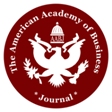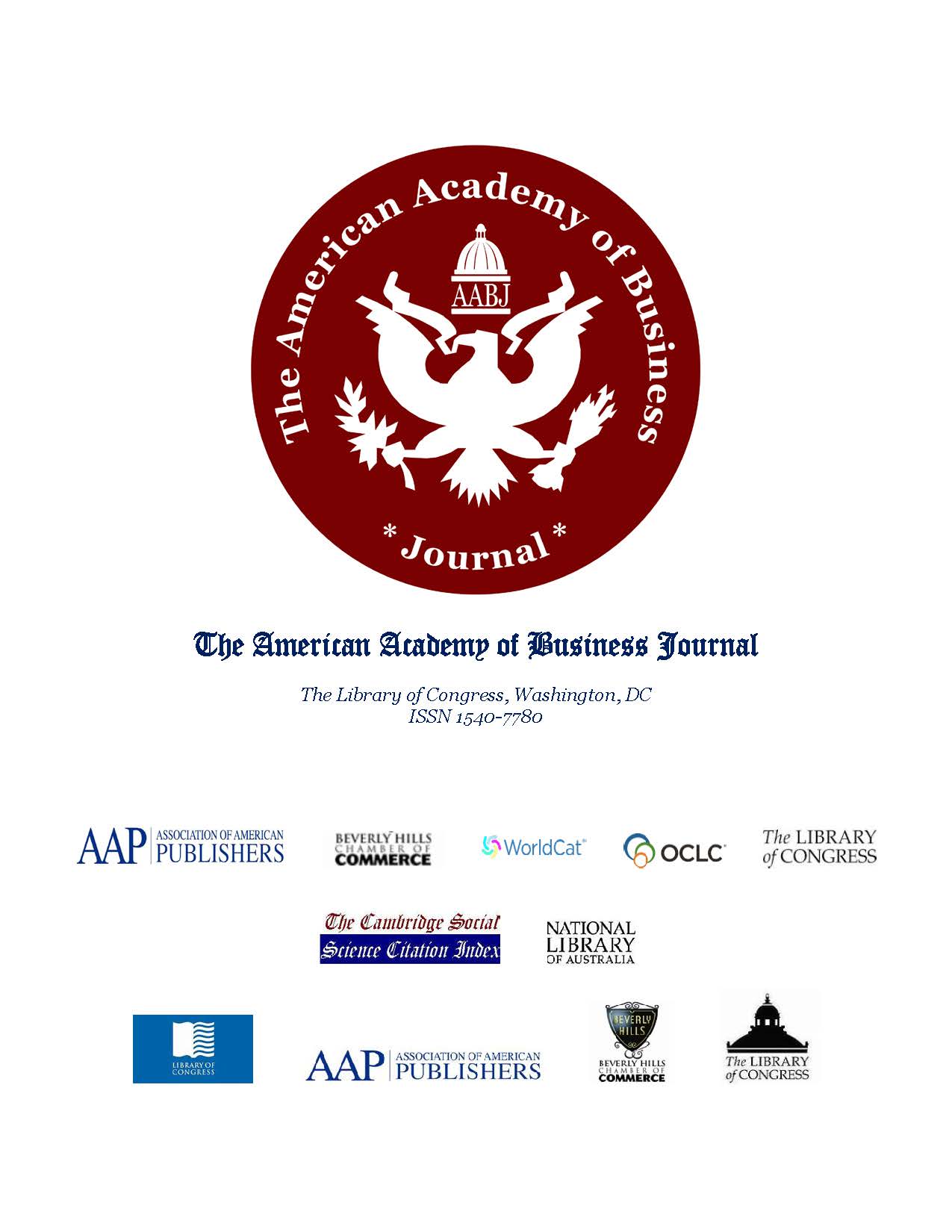|
Textual Analysis of Corporate MD&As to Determine Readability
Dr. Roberta Cable,
Pace University, NY
Dr. Chunyan Li, Pace
University, NY
Zhe Yu, Pace University, NY
ABSTRACT
The
Management Discussion and Analysis section (MD&A), a disclosure required
by the SEC, is found in a company’s Form 10-K or annual report. It is
written by management and provides investors and analysts with an
overview of the company’s prior-year operations, as well as insights
into the future. We believe it is important to consider that, although
guidelines for the MD&A are provided by the SEC, style and format are at
the discretion of management. The purpose of this paper is to determine
the readability of MD&As as it relates to the overall performance of a
company. We used textual analysis to test and compare the readability
of MD&As of stronger companies with those of weaker companies. The
companies were classified into three different industries. We found
that the MD&As of stronger companies were more readable than those of
weaker companies, particularly for those classified by Bloomberg as
Industrials. The Securities and Exchange Commission (SEC) has long
recognized the need for a narrative explanation of the financial
statements because a numerical presentation and brief accompanying
footnotes alone may be insufficient for an investor to judge the quality
of earnings and the likelihood that past performance is indicative of
future performance. The Management Discussion and Analysis section
(MD&A), a disclosure required by the SEC is found in a corporation’s
Form 10-K or annual report. Among other items, this section provides a
commentary on financial statements, systems and controls, compliance,
risks, changes in accounting regulations and policies, and future goals
and projects. This section is not audited. It is written by management
and provides investors and analysts with an overview of the company’s
prior-year operations as well as insights into the future. The MD&A is
intended to give the investor an opportunity to look at the company
through the eyes of management by providing both a short and long-term
analysis of the company (SEC 1987).
Full Text
Russian Agricultural Support Policies: The Case of Krasnodar Region
Dr. Olga Murova, Associate
Professor, Texas Tech University, TX
ABSTRACT
Russian agriculture has gained momentum in
recent years. Agricultural production has increased in the crops and
livestock industries. This study aims to investigate current Russian
agricultural policies on producers’ subsidies and to assess how these
policies, together with governing policies of local institutions, impact
the development of agriculture and agribusiness in Russia and in the
Krasnodar region. Krasnodar ranks first place in Russia in the terms of
the volume of gross agricultural production. It is also an important
player in the food industry of the Russian Federation. The Krasnodar’s
region produces 7% of the overall food production in the Federation.
Recent Krasnodar agricultural statistics show solid performance of
production in the region. As the leading region within Russian
Federation, Krasnodar receives federal support funds for agriculture and
agribusinesses. The total amount of support allotted for agribusinesses
of the Krasnodar region in 2021 is 5.48 billion rubles, comprised of 79%
federal funds and the remaining 21% of the funds coming from the
regional budget. Given continuation of current leadership policies and a
stable investment climate, the Krasnodar region will continue to grow
and expand its agricultural production, agribusiness and exports of
grain. Since
2005, Russia has released multiple agricultural policies aimed to
improve the poor state of agriculture especially in the livestock and
dairy industries. Ten years later, these policies have brought only very
modest improvements to the agricultural sector. In 2014, after the
events in Crimea and Donetsk, the U.S. and Europe banned the majority of
their exports to Russia. In return, Russia implemented aggressive
protectionist measures in its own agricultural sector to counteract the
U.S. and European sanctions.
Full Text
E‑N‑K‑T‑G‑A‑M‑I‑R: Marketing Model 101 For Non-Business Executives
Nadeem M. Firoz, B.Com
(Hons); M.Com; MBA; Ph.D.; Fulbright Scholar / Fulbright Specialist
Retired Professor of
Int’l Mktg., Montclair State University, Upper Montclair, NJ
Adjunct Prof. of Mktg
currently at Baruch, CUNY. NY
ABSTRACT
This
paper describes how systems of classifying and defining the variables in
the marketing mix were developed and the status of these systems today.
In this paper the authors propose an expanded definition of marketing
and develop a new systematic expression for the mix of variables found
in marketing. The variables are expressed in a logical order using the
acronym E‑N‑K‑T‑G‑A‑M‑I‑R. One can rearrange these initials to spell -
M‑A‑R‑K‑E‑T‑I‑N‑G. and hence remember. In this acronym one can find most
important key ingredients without which it will be impossible to do any
kind of marketing activity. The life line of marketing variable for
example starts with E: Environment (SWOT), N: Needs and wants
include, Market information system or Market research, basic
marketing K: Knowhow, segmentation and T: Targeting,
marketing mix which include (product) G: Goods, (price) A:
Amount, (place) M: Market, (promotion) I: Information
and at the end R: Reward or profit. This model makes it very easy
not to miss any important ingredient in the recipe of marketing. This
acronym will help a non-marketing or non-business executives like
engineers, doctors, lawyers, architect, historians, educators & many
more to have basic idea how to market any product or service. This
paper concludes with a diagram of the new system which can help
non-marketing practitioners, develop marketing plans. This author has
used very successfully this model in teaching marketing classes for
under graduate and graduate levels for last 20 years. All businesses
must perform two basic functions. They produce goods or services, and
then they market them. This is true for all firms regardless of size
from giant multinationals such as General Motors down to small
neighborhood stores. Unfortunately, most people consider marketing to
be selling or advertising, not realizing it is much, much, more HubSpot
Blog, Feb 25, 2021. Marketing is the study of consumers: to find out
what they will buy, and why, where, when, and how, they will buy it.
Marketing relates to all of us every day of our lives. If we have a
good understanding of marketing, we will understand consumers better.
Heidi in “72
Marketing Definitions” states, “Marketing
comes in a wide
variety of flavors based on audience, media platform and business in
today’s evolving and dynamic marketplace. -
Full Text
Authenticity: Exploring Potential Synergy between Existentialism and
Christian Leadership
Dr.
David Robinson, Professor, Holmes Institute, Australia
Dr.
Gordon Bauer, Academy of Business Acumen, South Africa
ABSTRACT
This article explores whether
existentialism and Christian leadership can potentially be synthesized
by the application of three stage theory, which has wide application in
both philosophical and theological discourse. In this paper, the authors
explicate and apply a model of bio-psycho-social behavior known as the
Values Journey (Robinson, 2020). Their nexus for existentialism and
Christian leadership is positioned at stage three of the Values Journey
model and is centered around the concept of authenticity. In
this article, the authors seek to reconcile thinking and believing by
employing a non-antagonistic approach. It is our contention that they
need not be, and are naturally not inclined to be, in opposition to each
other, and that they are certainly not mutually exclusive. In fact, we
postulate that the two can be synergistic when experienced in
combination. Existentialism’s rise to popularity in the 1960s may be
explained as an attempt to refresh the deep questions of humanness and
purpose. The temptation to throw the baby out with the bath water,
however, went unchecked and what resulted was a wholesale negation of
the values and faith-bases that are foundational to rational and
considerate social cooperation. Could the human race be facing a crisis
of identity. For many, thinking - that rational and intellectual
activity based on sound logical principles and generally accepted
methods of reasoning, OR believing - the holding of a value or
perspective, often associated with unverifiable assumptions,
superstition or individualistic idiosyncrasies of prejudice, seem to
have become mutually exclusive concepts.
In an ever-changing world, there is a need
to constantly re-assess how we lead others. In the words of Ford and
Fowler (2007:422) ‘any attempt to define leadership in a prescriptive
way will necessarily fail to capture the “essence” of leadership’. Thus,
we begin, not with a definition of leadership, but rather with a model
that we believe generously encapsulates the human journey of constant
adaptation, incorporating within its constructs the tenets of other
seminal and widely-accepted leadership development and theoretical
models.
We believe
the Values Journey model provides an objective basis for our
proposition, therefore,
in view of the centrality of this model to our supposed nexus of
existentialism and Christian-style leadership, we begin with an
introduction to the Values Journey model, essentially defining its three
stages and six value stations, explaining how transitioning occurs and
the leadership challenges associated therewith. Individuals and firms
are engaged in a journey that is influenced by their responses to
problems of existence.
Full Text
|
 The American Academy of Business
Journal
The American Academy of Business
Journal
.gif)